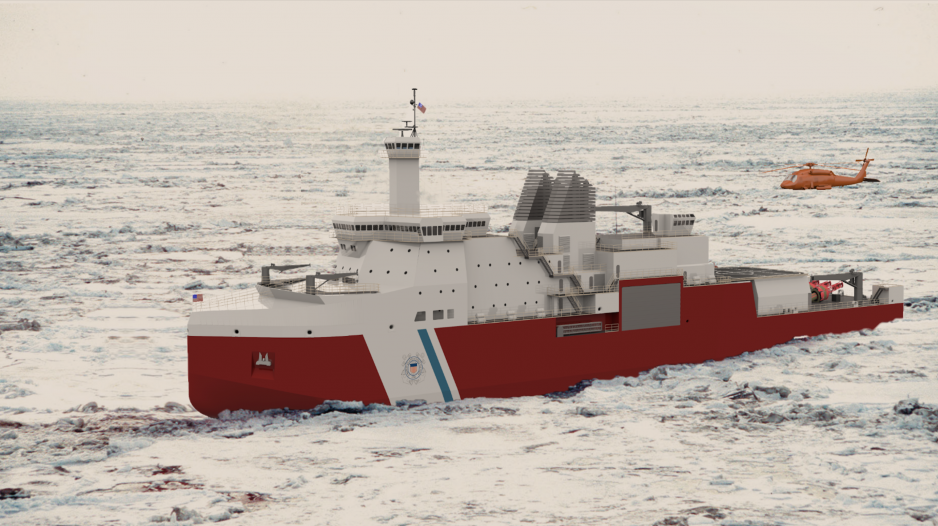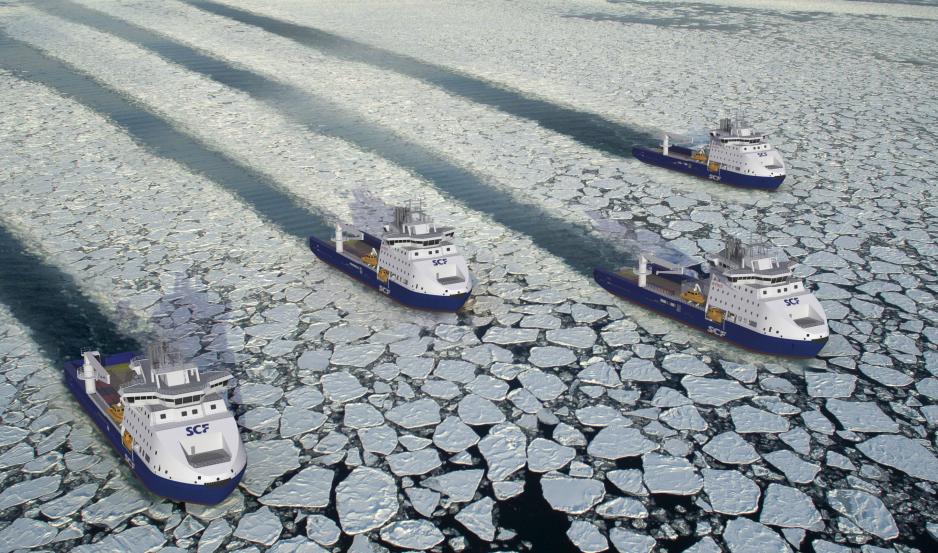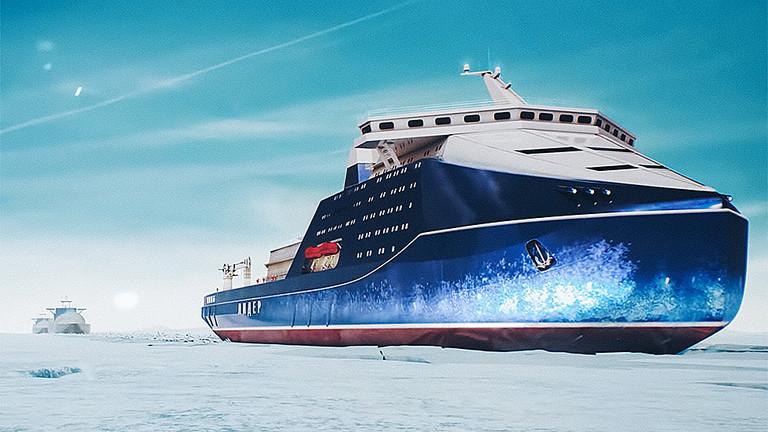U.S. Looking to Acquire 10 Additional Icebreakers, Possibly from Finland

Rendering of new U.S. Coast Guard Polar Security Security in icy waters. (Source: Courtesy of Technology Associates, Inc. via Congressional Research Service)
Following controversial remarks about “buying Greenland” last year, President Trump again offers off the cuff comments about U.S. policy in the region suggesting the country will get ten new icebreakers.
In comments made during a visit to the U.S. Southern Command on Friday President Trump announced that the U.S. is looking to acquire a total of ten new icebreakers. “We have, under construction right now, the largest icebreaker in the world. And we’re going to be trying to get, if we can, an extra 10 icebreakers,” Trump stated.
During his remarks President Trump also incorrectly asserted that the U.S. is currently constructing the largest icebreaker in the world. While construction on a new U.S. Coast Guard icebreaker, called the Polar Security Cutter, is slated to begin next year in Mississippi and the vessel will be among the largest conventional icebreakers, it is outclassed by Russia’s nuclear icebreakers.
While sharing scant details, President Trump also appeared to indicate that the U.S. could possibly purchase icebreakers abroad rather than construct them domestically: “We think we’ll have 10 because we’re trying to do a deal with a certain place that has a lot of icebreakers, and we’re seeing if we can make a really good deal where you can have them very fast.”
Icebreakers from Finland?
Among allied countries Finland is the most likely candidate the U.S. could procure icebreakers from with an extensive and proven track record. Finland is often called the world champion of icebreaking and its ship design companies, such as Aker Arctic, have developed or assisted in designing some of the most notable recent icebreaking vessels, including Russia's Arc7 ice capable LNG carriers.
President Trump also remarked that by acquiring icebreakers abroad the costs could be cut in half. “We’re working on it, and I think we can surprise you — at a very good price, which will be nice. Much cheaper than the one we’re building, and that’s also nice. You could do about five of them,” he concluded.
The remarks follow a recent White House Memorandum on Safeguarding U.S. National Interests in the Arctic in which the administration called, among a long list of items, to study the feasibility of nuclear-powered icebreakers. A detailed study on the benefits and risks of a future U.S. icebreaker fleet is expected for early August.

Finland wants to break the ice for everyone and everywhere. Arctech Helsinki Shipyard presents some of its fleet of offshore icebreakers. Icebreaker technology and knowhow is one of the major Finnish industrial successes. (Photo: Arctech Helsinki Shipyard)
Possible challenges for icebreaker under construction
The U.S. Coast Guard currently operates just two icebreakers, one of which is quickly reaching the end of its operational life. Construction on a new heavy icebreaker, also called the Polar Security Cutter, is expected to start next year at VT Halter Marine Mississippi, which won the bidding for the $745 million contract last year.
The project, however, may already be facing challenges after a change of leadership at the shipyard and concerns that the company may have too aggressively underpriced the contract. A study by the U.S. Congress’ research service recently flagged similar concerns describing a host of requested modifications to the original design – which was based on the German icebreaker Polarstern II. Design changes could introduce additional costs, technical challenges, and delay construction.
Such challenges appear even more likely following the White House’s recent Memorandum which asks for expanded operational capabilities, including “unmanned aviation, surface, and undersea systems; space systems; sensors and other systems to achieve and maintain maritime domain awareness; command and control systems; secure communications and data transfer systems; and intelligence-collection systems” and the possible inclusion of “defensive armament adequate to defend against threats by near-peer competitors.”
Russian constructing world’s largest icebreaker
Meanwhile, Russia pushes ahead with the rapid replacement of older nuclear icebreakers and simultaneous expansion of its fleet. Last week it began construction on the world’s largest icebreaker, the 10510 class also known as Leader-class. With a 120 MW power plant the vessel will be twice as powerful as Russia’s next-powerful nuclear icebreakers of the Arktika-class and almost four times as powerful as the U.S.’ new Polar Security Cutter.

Leader-class icebreaker escorting LNG carriers through Arctic sea ice. (Source: Courtesy of Rosatomflot)
In total Russia aims to construct three ships of the Leader-class to begin entering service by 2027. Construction on the flagship, named Russia, began in the Zvezda shipyard in Far East Russia. With this new type of icebreaker the country wants to ensure year-round navigation along Russia’s icy Northern Sea Route to deliver oil and gas exports to Asia.
“It will become the most powerful icebreaking vessel in the history of global shipbuilding,” the operator of Russia’s nuclear icebreakers Rosatomflot said, adding that it “has no analogues in the world.” It also stated that the “Leader project will become the basis of the new generation Russian icebreaking fleet.”

